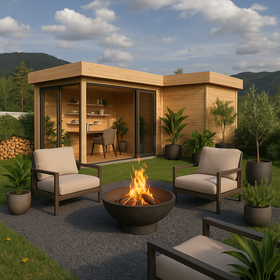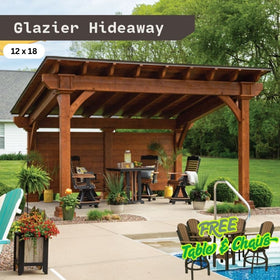512-777-0154

How to Make a Game Room: Guide for Any Budget or Space
So, you’re wondering how to make a game room that fits your space, style, and wallet? The secret is simple: plan smart, spend wisely, and have fun creating a space that feels like you.
Whether it’s a corner of your bedroom or a full-blown gaming den, this guide walks you through every phase, from planning and layout to lighting and those final, cozy touches.
Phase 1: Planning and Budgeting for Your Game Room
Before buying anything with RGB lights, take a step back. The best game rooms start with a little planning and a clear idea of what you really need.
Let’s break it down.
Assessing and Choosing Your Game Room Location

First, figure out where your game room will live. It doesn’t have to be a huge basement or a spare room. Many great setups start in small spaces.
A spare bedroom gives you privacy and plenty of wall space for shelves. Basements offer total control over lighting and sound. Even a corner of your living room can become a gaming zone with the right setup.
Small space tip: Go vertical. Wall-mounted shelves, pegboards, and floating units save space and look clean. Choose multi-use furniture like fold-down desks or ottomans with hidden storage. You’ll make the room feel bigger without giving up comfort.
Setting a Realistic “Game Room on a Budget” Plan
Game rooms can get pricey. But building one doesn’t have to drain your savings.
Focus on high-impact, low-cost upgrades first. A coat of paint in a bold color, better lighting, and organized cables can completely change the feel of a space.
Furniture hacks: Check thrift stores, local marketplaces, or clearance outlets for hidden gems. Repurpose a dining table into a board game surface. Use an old bookshelf for storing consoles and accessories. Many gamers upgrade often, so secondhand deals are everywhere if you keep an eye out.
Defining Your Gaming Focus (Video, Tabletop, or Social)
Every great game room starts with a purpose. What kind of gamer are you?
- Video gamers: You’ll want an ergonomic chair, sturdy desk, and a display setup that fits your screen time habits.
- Tabletop fans: Go for a large table, comfy chairs, and organized shelves for game boxes and cards.
- Social gamers: Mix in entertainment features like a mini bar, darts, or even a pool table for that classic game night feel.
Knowing your focus helps you design a space that feels right from day one.
Phase 2: Mastering the Layout for Small Spaces
A great layout makes even a small space feel open and inviting. Think function first, style second. The right layout can make your room feel twice as big.
Furniture and Seating Strategies for Comfort and Space-Saving

Comfort is key. A great gaming chair like BBO Showdown Pro Poker Gaming Chair supports long sessions without taking over the room. Look for adjustable chairs with good back support.
Desks don’t have to be bulky either. A simple table or a corner desk keeps things efficient.
Multi-purpose furniture is your best friend. Ottomans that double as storage, modular sofas, and foldable desks help you adapt to any setup. Keep larger items against the wall to open up the middle of the room and maintain a clear line of sight to your screen.
The Video Gamer’s Core Setup (Monitors, Consoles, and PC)
Your display is the heart of your setup. If space is tight, go for a 27-inch monitor; it’s big enough for immersion but compact enough for small desks.
Mounting your monitor or TV helps save surface space and reduces glare.
Cable clutter can ruin a clean look fast. Use zip ties, clips, or under-desk trays to keep things neat. It’s one of those small details that make your setup feel polished and professional.
Creative Storage and Decluttering for a Small Game Room
When space is limited, storage becomes an art.
Go vertical with floating shelves, pegboards, or wall cabinets. These free up your floor while keeping everything close at hand.
- For board games: Use labeled bins or stackable drawers for quick access.
- For video games: Install wall racks or small drawers for controllers, chargers, and discs.
A tidy setup not only looks better, it helps you focus on the fun part: playing.
Phase 3: Creating the Perfect Immersive Atmosphere
Now that the bones of your room are set, it’s time to make it feel alive. The right lighting, colors, and sound can turn an ordinary setup into something special.
Designing the Optimal Lighting Setup

Lighting can make or break a game room. Use soft, indirect light to create mood and reduce eye strain.
RGB LED strips behind your monitor or under your desk work wonders. You can change colors depending on your mood or the game you’re playing.
Skip harsh overhead lights; they cause glare and ruin immersion. Instead, use floor lamps or smart bulbs for a softer glow that matches the moment.
Color Schemes and Themed Decor for Adults
Not all game rooms need to look like a neon carnival. If you prefer a mature vibe, go for darker tones like navy, charcoal, or black. Add subtle accents in metallics or color pops that reflect your personality.
Use framed art, collectibles, or vintage posters to make the room yours. Display a shelf of favorite titles or classic consoles. A well-placed decor piece tells visitors exactly what kind of gamer you are.
Sound and Acoustics (Protecting Neighbors and Boosting Immersion)
A great sound setup pulls you into the action—but it doesn’t have to annoy everyone else.
Soft furnishings like rugs, curtains, and wall panels help absorb sound naturally. Even a few foam tiles on the walls can make a big difference.
For true immersion, invest in good speakers or quality headphones. You’ll hear every detail without shaking the walls.
Phase 4: Final Touches and Quality of Life Upgrades
You’ve planned, decorated, and wired it all up. Now, let’s make your space even more comfortable for those long gaming marathons.
The Game Day Refueling Station

Snacks are essential. Add a KingsBottle 24 Inch Undercounter Beverage Cooler or snack shelf for drinks and quick bites. It saves you trips to the kitchen during intense sessions.
If your setup leans more adult, a small coffee bar or countertop can add a classy touch. It’s perfect for hosting friends or late-night tournaments.
Durability and Maintenance
Your game room should look great and last.
Choose sturdy furniture that’s easy to clean. Wipeable desks and leather chairs make maintenance a breeze.
Keep airflow steady to prevent overheating, both for you and your tech. A quiet fan or good ventilation system can make all the difference.
Regularly dust your equipment and check cables to keep everything running smoothly.
Your Game Room Design Action Plan
Creating a game room doesn’t have to be complicated or expensive. Start with what you have, focus on smart upgrades, and build it piece by piece.
Whether you’re working with a spare room or just a cozy corner, how to make a game room comes down to creativity and personal flair. Plan your space, stick to your budget, and add touches that make you smile every time you play.
Now it’s your turn to press start and bring your dream game room to life.



